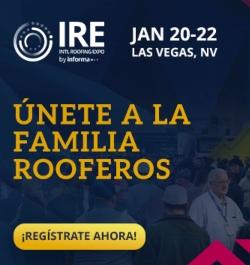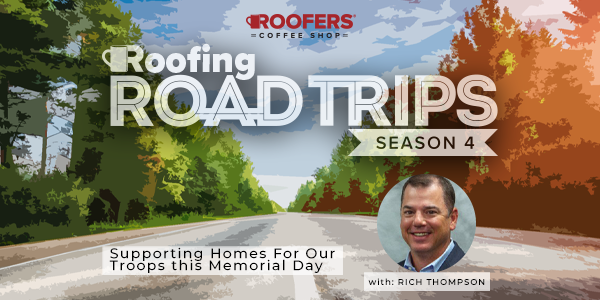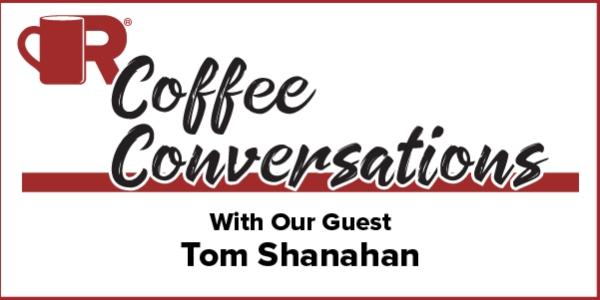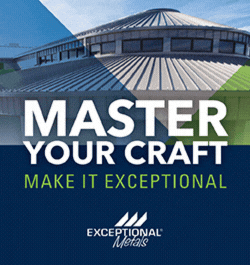Roofing Road Trip with Heidi- David and Scott from Jobba - PODCAST TRANSCRIPTION

Editor's note: The following is the transcript of an interview with David Almario and Scott Keith from Jobba Trade Technologies. You can read the interview below or listen to the podcast here.
Heidi Ellsworth: Hello, this is Heidi Ellsworth, our CS partner, and we are here again today, with the Roofing Road Trips with Heidi podcast. This is going to be a fun one. I have to tell you, with what's going on right now, today is April 15th, 2020, technology is more important than ever. Our special guests today are leading the crusade, are leading the industry in really helping contractors with the technology they need to run their business. I am so proud to introduce Scott Keith, who is the CEO of Jobba. Scott, welcome to the show.
Scott Keith: Good afternoon.
Heidi Ellsworth: Good afternoon. And, with him is David Almario, who is the COO of Jobba, and also super smart when it comes to everything technology, a member of RT3, as is Scott. So, both of these gentlemen, they know what's going on. David, welcome to the show.
David Almario: Thanks for having us, Heidi. We really appreciate it.
Heidi Ellsworth: Yeah, I've been really excited for this discussion, because I love roofing and I love technology, and you two bring it all together. Let's get started. Okay Scott, first of all, I would love it if you would share with our audience just a little bit of history about FCS, and this new platform of Jobba. I've been involved, I've been involved with FCS almost from the very beginning, I've watched what you guys have done, I've been lucky enough to work with you. So, I would just love for you to share that journey with our listeners?
Scott Keith: Okay, absolutely. FCS was created a little over 10 years ago, and it was a technology born out of a need to manage a large service project. At the time, there weren't many other options out there to help with this, so the founder developed this to manage that project. That quickly broadened into a solution that was really expanded to help throughout the roofing organization itself, everything from service to production, and sales. I guess, the primary focus was on efficiency, and quality, and growth. But, over those years in working with several customers, one thing that has evolved is the need to expand beyond just efficiency, and to really expand into other aspects of the organization. Helping the departments work together more collectively, but also outside the organization. So, about four years ago, we set out to rebuild a whole new platform, based on the feedback we've received from our customers that took into account all the challenges our customers have faced, growing with our application over the last 10 years. Several of those things, we noticed, we based on the fact that these organizations had grown several times what they were originally, and those growing pains helped identify a lot of ways to expand and improve the product. But, we knew that FCS, when it was designed, had never been designed based on a whole, comprehensive platform for the organization. It was designed for a specific company, or department within a company. So, we set out to design Jobba to really meet these needs today, but also build it in a way that can adopt and evolve, as the needs of their organization change in the future.
Heidi Ellsworth: Wow. I just think that's so smart, in the fact that really listening to the contractors. I know that's one of the things we talk about a lot. Just, really what do they need? With what you've all done with Jobba, to really create something that can grow with companies, and I think that's exactly what we need going into this new normal. This new age where technology is going to play such an important role. But, before we go onto that bigger picture, I do want to touch base again on roofing service and maintenance. Really, Scott and David, FCS was groundbreaking for service departments. I'm just curious, with everything that's going on, and with all of your research, what are you seeing as trends for roofing contractors, that they can incorporate to grow their service and maintenance departments?
David Almario: Sure. Thanks, Heidi. I think we should start with what's well known in the industry, what's well known for contractors as far as trends. I think the first one we want to point out is growing your service business, or getting into service business is really proven way to stabilize your business. I think now more than ever, contractors are aware that there's better margins on the service work, and these better margins can lead to better relationships, providing projects and service work over time. Especially now when things are so volatile, we need ways to stabilize our business. A recognized trend, an understood trend that happened over the last 10 years with service is that service is that department or that area, that really can help a company stabilize their month to month. Scott?
Scott Keith: What's happened over time is that clients, property managers have started to have a desire to get more information. There's this on demand world, where they want information at their fingertips. They want to be able to make requests on demand, they want to be able to see the status, and know the answers on demand, when they want it served up to them. The customers we have, that are really growing their service business, really understand that there's a need to connect to those property managers and clients, to give them more information, and to be able to communicate in the different ways in this on demand world wants. Right?
Heidi Ellsworth: Yeah.
Scott Keith: An example would be taxis were always you called and planned in advance when you wanted a cab, or a black car to come pick you up. I know I did that all the time when I was flying. But today, people don't even think twice, they just order an Uber when they're ready. They don't think to plan ahead the day before, or the night before to schedule this. That is not unique, in that world, that's happening everywhere. In our space, it's no different where property managers, when they're ready to consume information, they want to call it up right now. It could be reactive information, where they have to call in a leak, or when they want the status of whether you're onsite, or proactive information where they can take the historical information, and manipulate it for reporting later. The customers that we have really growing their business are finding new ways to communicate and give information to their clients.
Heidi Ellsworth: You know, I think that's perfect. David, yes, I want you to ... Maybe David, you can follow up, too? I don't know if everyone's aware of the portals that are part of your platform. But I have to say, Scott, I love that comparison between the taxis to Uber, because we're all doing it, we want our information now. We don't want to wait, we don't want to have to call, we want to go onto a portal, and we want to get it. David, how is that working for contractors?
David Almario: Sure. It's great, that's exactly where we want to touch on, is the customer portals. You see so much of the B2C world going into the B2B world, and you see that with the client portals and customer portals. Many people within even construction technology, you're seeing more and more customer portals. As Scott was saying, the trend here is the real focus on how to communicate in a timely and efficient manner, serving up that information, the pertinent information to the client, at the time that they need it. If you look backwards and say, what happened 10 years ago when, for example, someone wanted a service request, what would they do? They'd call someone up and say, "Hey, I'd like a service request," and they'd place it. If you take that all the way through, how would they follow that? They'd send out a person. How would they manage the team that they sent out to handle the service request, how is the communication going back and forth? Then, a person would come back to the office and say, "I completed it, here's my work ticket." That process has very little visibility, and the facility manager or building owners have no visibility until after work's complete, after the person's done. It could be a week, it could be a month later, before they even really know that activity took place. I think a good example, another offline example is you look at something like Dominoes Pizza. Dominoes Pizza is now great, you can order on your phone, on your tablet, on your computer. It's great, as soon as you hit order your pepperoni pizza, you see the name of the person that's starting to prepare your pizza, you see the name of the person that's putting on the cheese and the pepperoni, put it in the oven, you see that your pizza's in the oven. It goes to the next stage, it goes from whatever, red to yellow, and all the color. It follows through, and then you see when the pizza's complete, and then out for delivery. In every one of those steps, there's a specific person doing a specific process, that you as a consumer can follow. It's great, and as consumers we get used to that kind of on demand knowledge and information. So, what we're trying to do, and many companies are doing it with customer portals, is we're trying to provide that same access to information when someone expects it, which is now. A customer portal in the service example is when someone places a service request, they don't want to necessarily have to pick up a phone. Why can't they use a tablet or a computer to do it, and why can't they see that it's been recognized, and receive a notification? And then, see when the service crew is out to their property, and on their property, and all the progress steps customer portals now allow people to see that activity happening in real time. That's very meaningful, people know what people are doing, and it gives a whole new level of service from the contractors to their customers.
Heidi Ellsworth: Yeah. Yes, I love those examples, that is so cool. Take it from there, to the fact that we now have iPads, smartphones, drones, you name it up on the roof. I'm seeing some companies out there with monitoring systems on the roof, that are feeding that information back into the program. How is that working?
David Almario: Sure. It's great, we love these tools. These tools are really good for ... Think about what those tools are doing, whether it's a drone, or an iPad, or anything. What they're doing is improving the acquisition of data process. They're making that process easier, they're making it better, more data, it's easier to handle and manage. When we think about these advantages that come from it, we've talked about this, and we feel that the advantages for contractors come from how that information is then organized, what they do with that information, how they act on it, and how they serve it up to their clients. I think there's three or four advantages that come, once that acquisition process is complete. The advantages really come in those next steps.
Scott Keith: Yeah. To expand on what David's saying, I really see three big benefits of these end devices. David mentions data acquisition. In addition, it really does connect the field to the back office. And third, it enhances the communication to those clients we mentioned earlier. That's where those technologies are really focused on. The iPads, even the drones, is all about getting the data, connect you to the back office, and extend that communication to the clients. Leveraging that, you can really drive higher quality of service, you can give guidance and oversight to your field organization, all the way up to your leadership team. It also allows the ability to scale and expand your organization, without the trade offs of consistency, of security, of quality. If you think about it, a lot of the process today, using these technologies, is simply moving from a linear or serial process that required the person performing the inspection, gathering the data, to be the one performing the tasks of reading the notes, and putting it in a document, and sharing it with the client. What this technology's really doing is allowing the transition into more parallel process, breaking this up into different components so that it's a bunch of tasks that are then allocated to individuals that are specialized in that area. The person that's best at inspection a roof, identifying issues, and collecting that data may not be the most skilled at communicating, documenting that information, and also may not be the person that has the best relationship to communicate it back to the client. So, these technologies allow you to have all these steps mapped out, and acted on by different individuals in a parallel way that doesn't limit, or constrain, the ability to do this in near real time.
Heidi Ellsworth: That leads right into that whole sales. I mean, good communication with the customers leads to future sales, and also the ability to have all that data. Scott, can you continue, maybe, talking a little bit more about that? I love how contractors ... Especially now, right? We're remote selling, we have to have information virtually for people, wherever they're working. How are strong CRMs and project management software making a difference in growing the sales, and also closing the longterm negotiated work that commercial roofing contractors really want?
Scott Keith: Yeah. You mentioned CRM, project management, those are really two tools, I call them software tools or components, of an overall roofing management system. We go back to the beginning of our conversation of, that's really the origins of technology into the space, where there was always a desire to build a better tool to do some specific task, whether it's estimating, or proposing, or doing an inspection. While there are individual efficiencies in each of those tools, what's happened is that it's created a lot of inefficiencies in working between these departments and groups. I guess, I'll answer this question more in line of an overall roofing management system, and that does two things. One is in really getting new prospects, this really increases your ability or capacity to provide more services for prospecting. It allows you to extend services that were once constrained by limitations in your resources that you could offer to new prospects. It also allows you just to manage the overall data of information for these prospects, to extend offers, to communicate, and by doing that you're expanding the pool of potential sales, just in using this technology alone. And, establishing some sort of credibility with the prospect. One thing that I believe is that this is a relationship type industry. The best way to establish a relationship is to somehow start working with a new prospect or client, in some way. These technologies allow you to provide certain services, or relationship, that could then turn into an opportunity later on, for real work. Then, the second piece beyond prospecting is handling your existing accounts and customers. These technologies, these roofing management systems, really allow you to capture and document what is agreed upon, and what is done, in near real time. This really minimizes the conflicts or problems that can occur throughout any project, or any job you're doing. I mean, everybody knows that problems are going to occur in a job, and what our customers are really good at doing are they keep as much information as they can, they communicate as clearly as they can, they use these applications to do it. So, as soon as a problem arises, there's not much finger pointing, there's really a clear trail of what was said, what was done. So, really it builds and establishes a trust in working with these contractors. I'll tell you, that's what leads to the negotiated work. Because, at the end of the day, nobody wants to overpay for work, but there is absolutely a willingness to pay a premium for work that you trust will be done in the right way, and if there's an issue, it'll be resolved. That's what we see a lot of our roofing contractors doing.
David Almario: If I can add to that, I think one thing that Scott really pointed is you look at these technologies ... We were talking about this recently. One of the comments that Scott made was some of these technologies really act as an objective observer, right? An objective observer. This technology, almost like a video camera, it allows someone outside to capture it. Things like communications, proposals, emails, quotes, changes to quotes and proposals, work order changes, all those things can be captured within these systems, and it really allows for a trail. There doesn't have to be the finger pointing when things go wrong, and there's a trail that can capture it. That's what these technologies do. And, they centralize it, and they make it easy to access. It's not someone in someone's file folder, they have to dig into, and then fax it over to somebody else to say, "Remember, I said it was 20 not 23?" And the going back and forth. This is an objective observer, these technologies are objective observers to the communication, allowing both parties to see what transpired over time. Like Scott mentioned, it builds that trust. To us, that's the great thing, it allows that trust to be built over time, and therefore setting a new level of expectations. A new level of service exceptions, a new level of service excellence that contractor can provide to his customers, and they can expect that, time and time again.
Heidi Ellsworth: You know David, too, one of the things I learned about, that was so obvious afterwards but I learned about at Eagle View was creating stickiness with your customers. So, creating something that helps them stick to you, and that's really what you're talking about, that's what this platform does for contractors with their building owners. They get used to it, it's so convenient, and it's sticky for them. That concept, I think, is important. That's something contractors really don't think about, but it's something they do naturally.
David Almario: You know, you're exactly right, Heidi. I think back to the thing you brought up earlier, which is the client portals. Think about it, if you have a customer today that makes their service requests, or finds service information through a customer portal. Do you really think that same customer, that same facility person, wants to go back to phone calls, and emails, and file folders? I mean, no way. Once someone gets a taste of a client portal, or a customer portal, and to be able to find information about their building or buildings easily, they don't want to go back. That is the stickiness, right there.
Heidi Ellsworth: Yeah. That technology differentiates them, and really helps them move forward with the customer instead of backwards.
David Almario: Yeah.
Heidi Ellsworth: I love that.
David Almario: For sure, for sure.
Heidi Ellsworth: Keep going with that, because I'd like you to talk ... To me, this is all leading into, really, the world of Jobba. I know we started out talking a little bit about Jobba, but I'd like to give the listeners that bigger picture of exactly what Jobba is, what it offers, and how you see that really fitting in with roofing contractors in their business?
Scott Keith: Sure. I'll contrast it with FCS. FCS was designed around best practices, roofing best practices, and it was built to enforce those process for an organization. In other words, a roofing company would purchase our software, and would change to adopt to the FCS best practice. That was great for companies early on in technology, adopting it for the first time. Maybe it's their one and only application. It worked really well. It still does today, we have customers that love, and sign up every day for FCS. owever, that best practice has trade offs. In other words, you had to determine what is the best way to perform a certain task, or process. In many organizations that do more than roofing, or that just have a different setup than others, there were always workarounds and trade offs in those situations. So, we designed Jobba for the roofing industry, and built it to be configured to the organization. In other words, Jobba changes to adopt the roofing company's best practice, that specific company's best practice. So, it's really looking at the issue from the other end, right? That focus is extended to, really three areas, which are improving and expanding their data gathering, improving our connections within a roofing organization. So, no longer are we the only application in an organization, sometimes there are three, five, 10 other software applications, these software tools, that they want to connect with. So, we're really improving the ability to connect within the organization, to these other applications, and to the other departments that have other processes. Then finally, expanding the connectivity to outside the organization. What's that mean? That means a contractor doesn't live in a world where they can be isolated from everybody else. The job typically comes from a client, or a property owner. They often work with subcontractors, they deal with manufacturers, they deal with distributors. We built Jobba in a way to standardize our data collection, and normalize that information, so that we can connect with other entities, such as a subcontractor or manufacturer, to enable this cross communication and data flow, to greatly enhance the roofing contractor's experience.
Heidi Ellsworth:Got it. Okay. I want to put a little context around that, because I've been hearing, and maybe not everyone whose listening, but you will be hearing a lot about open platforms, APIs, software stacks. We're talking about all of that with our team, [inaudible 00:25:16], it's a lot of things. That's exactly what Jobba's doing, right?
Scott Keith: Yeah. I'll be careful there, because there's always a lot of buzzwords. You hear API a lot. What does that really mean? API is nothing more than defining a standard on a way two applications can talk. It does not solve the problem. It reminds me of a time, before I was in Jobba here, people would use buzzwords, and throw technology to make it appealing. It wasn't really solving a problem, or necessarily wasn't really providing a lot of value, as much as it was a cool thing to do. So, there's a little bit of that happening in our industry today, but where we're focused on is having an API does not solve your problem. Having an API doesn't necessarily address the underlying needs of an organization. But, having an API with the fields identified in your application, that map in a way directly to another application, so that they're useful, and have value to be used by that other application, are valuable to an organization. What you'll see is a lot of people out there saying, "We have an API." Or, "We have a connection." What does that mean? It could mean, well we can send your name or address over to this other application. That's not really valuable. How would that really help your accounting system, if I can send just the client's name and property location? As an example, what we built in Jobba, was a complete ledger in Jobba. Not to replace accounting systems, we'll never be an accounting system, but we built a complete accounting ledger in our system, and required an immense amount of work, so that with our API, we can map exactly the fields, down to the discrete level, directly into your accounting application os that it is absolutely valuable and useful to you, when you're using your accounting application. Does that help explain it?
Heidi Ellsworth: I think that's cool. That does, because, you're right, we are using these terms. Okay, that means two systems can talk to each other. But, you're right, if they're only talking in little pieces and not the whole situation, like what you're talking about with accounting, that makes a lot of sense. That's great.
Scott Keith: Sure.
David Almario: If I can add to that, Heidi, too, I think the thing that's real interesting about it ... We're excited, we love the technology, and the ability to talk to other systems. I think that the interesting thing about it is that it's forcing some standardization within processes. We talk about these APIs, the APIs are just a method of communicating. But, to Scott's point, it really talks about the workflows. What's really important is when does data go from system A to system B? And, does it go back? Where is the master ID maintained? There's a lot of interesting questions around it, so when we start looking at integrating, and developing these connections with other software application, those are the things we're talking to our customers about. So, it's really interesting to see, and helping, I believe, customers standardize their workflow and their practices, for consistency, and that, longterm, helps them. One of the things, I think we mentioned earlier, or were looking at earlier, is how do we help our customers build standard workflows, build standard practices? All these things coming together really force a consistency that allow people to, like Scott was mentioning, allow people to specialize in certain areas. We talked about it, and mentioned earlier with scaling, you're able to scale if you can allow people to focus, and do processes in a parallel fashion, and not a serial fashion. The person that picks up the phone to take the service request is not the same person that's jumping in the truck, and driving out to the site. It's like we use the example of the Dominoes, the person that's taking the order isn't necessarily the person jumping in the car and delivering the pizza. All these things together, these technologies working together, speaking to one another through APIs and through integrations, really allows companies to take advantage of it, they're able to scale better, they're able to specialize better. Frankly, to get more work out of the people they have, has labor is such a huge issue. You can do more with these technologies, it allows you to do parallel processes, giving your people the ability to do more with the same amount of folks on their team.
Heidi Ellsworth: Exactly what we need. That's excellent. Okay, we're coming to the end of our half hour here, but I wanted to ... Scott, like what you said, that Jobba looks at it, how does that fit into the contractor, into the business? You've really grown that through contractor driven development, listening to your contractors. What I'd like to end this with is, how does a contractor get from where they're at, to where they need to be with technology? How do they work with you? How's that happening, so that they know next steps after this podcast?
Scott Keith: Well, I guess I would say in our world ... Maybe I'm misunderstanding the question a little bit. But, we work really closely with new prospects and our existing customers. It's a philosophy here that the person closest to the problem is the best at defining what the problem is. The best way to connect with us is, really, just to reach out. Once we know that there's a desire here to try to solve a problem, that's what we do with our current customers every day, and new ones that call us up. Our team has, really, two core competences. One is we're experts in technology, that's what we live, and breathe, and do, every day. Just like I would call an expert to handle my roof, we are the experts in software technology. The second thing we do every day is we work with different roofers, every single day, on their problems. While we talk to roofers that have been at the same company for 50 years, or some that have, maybe, moved around, where they've been in three different companies, we work with hundreds of customers each and every day, and so do all of our teammates here. So, they often see a lot of the same problems being addressed in different ways, or being solved in different ways. We take that knowledge of how it's been solved in all these different organizations, to try to identify the best way each and every one of these new customers' comes to us and says, "Here, here's how we've seen it solved. Here's the best practice we've seen." Really, what we say here is it's the difference between good and great. We can create good software, we can create a good process for everything. But, what'll make it great is if we really listen to our customers, to really understand the challenges. At the end of the day, we don't get up every morning and run a roofing business, so we depend on our customers that get up every day, run a roofing business, use our software to do it, to give us feedback on how it works, and how it could be better. It's that continual focus on improvement, and how do we continue to improve it, that keeps us on track. It ensures that we're working on the right things, and it ensures that we're working to solve it in the right way. I know if we keep that relationship going, we'll always be ahead, or on pace with our customers' needs. That's how we work.
David Almario: If I could add to that, Scott, one of the things we say internally, and I know many companies say this, and we really believe it, and really have our team saying it. And that is, our success depends on our customer success. So Heidi, when you ask us how are people working with us, how do they find us, we really want to make sure we're staying close with our prospects and customers. We've joined some of these groups and become a part of them, hopefully to hear and learn more. We always want to learn more about the industry, learn more of what's going on, to stay aware of it. We want to be able to take that knowledge, whether it's from the RT3, and NRCA, and the different associations there, taking that knowledge and incorporating it, because we want to be sure that the success that we have is because our customers are successful, and because with customers stay with this over years. That's why we built Jobba, is to adapt to the changing needs, the evolving needs of our contractors, and built a platform from the ground up, to make sure that we accommodate their needs. Not only today, but tomorrow. We don't know the technologies of 2021, 2022, so we tried to build an open platform that allows us to incorporate those things, and look down the road to make sure that a customer that's successful today can be successful tomorrow, as they continue to grow.
Heidi Ellsworth: You know, every time I sit down and visit with the both of you, I learn a lot. I am inspired. I know leading contractors in the industry are using Jobba and FCS, and because of that, are positioned for what's going on right now. I want to say thank you for being that technology company, and for helping us all understand it, and helping the industry really become as professional, and as great, even greater than it is today. It's going to be so much better tomorrow, with your types of technology. Thank you so much.
David Almario: Sure, thank you. Just to give you a shout out, I think it's great we have people, leaders in the industry like you, Heidi, that have been a leader in the industry for a number of years, and you're such a strong advocate, and proponent for technology, for challenging the old way of doing things. I think you've made a career on challenging the status quo, and we really appreciate it because without advocates like you in the industry for technology, and pushing ourselves to do better, I think we'd be further behind. I'm glad to hear that you're always pushing that. We really respect, we revel in the work she's doing to improve the image of roofing, things like that, that really push us all better. You say nice things about us, but Heidi, please know that we're also inspired working with you, and being friendly with you, and working with your team. We really appreciate that as well.
Scott Keith: Absolutely. Thank you, Heidi.
Heidi Ellsworth: Thank you, Scott and David. I just love this stuff. I feel, actually, right now I think everyone whose in technology, whose been in RT3, and NRCA, and all of the associations, who have really looked to the future are actually finding themselves in a pretty okay place. Or, as okay as it can be right now, in the middle of the Coronavirus. We're lucky that we have all of this going. Again, I want to thank both of you for being here today. I want to make sure that all of our listeners know that there is tons of information from Jobba, FCS on the Roofer's Coffee Shop, in their directory. Articles, eBooks, great information that can really help you take that next step, if you haven't. If you have, take even the next step, because you know it's changing every single day. Be sure to visit Jobba and FCS on the Roofer's Coffee Shop. One more time, thank you gentlemen, for being here today.
Scott Keith: All right.
David Almario: Great. Thank you, Heidi.
Heidi Ellsworth: Thank you. Please, everybody listen to all of the Roofing Road Trips podcasts, underneath our Read, Listen, Watch section of the website, of Roofer's Coffee Shop. You will hear some great podcasts. We also have the Heidi and Vicky Show on there, so all kinds of entertainment. And, amazing information and education. Thank you again, and have a great day.





















Comments
Leave a Reply
Have an account? Login to leave a comment!
Sign In